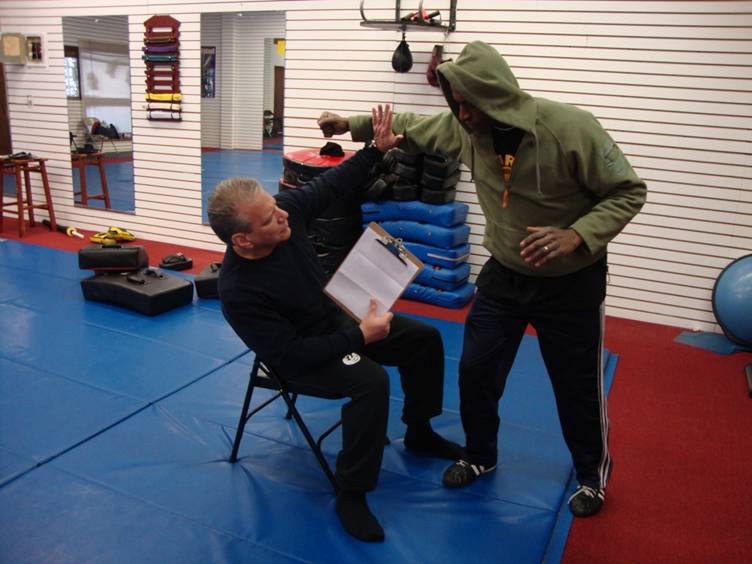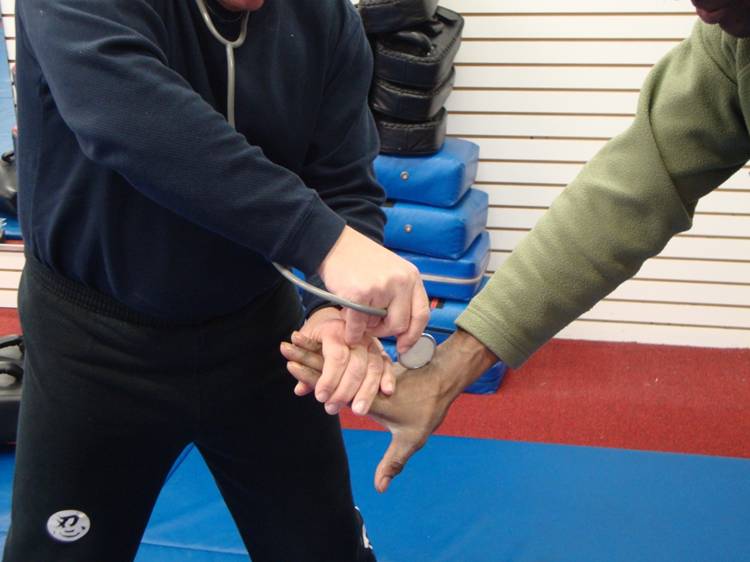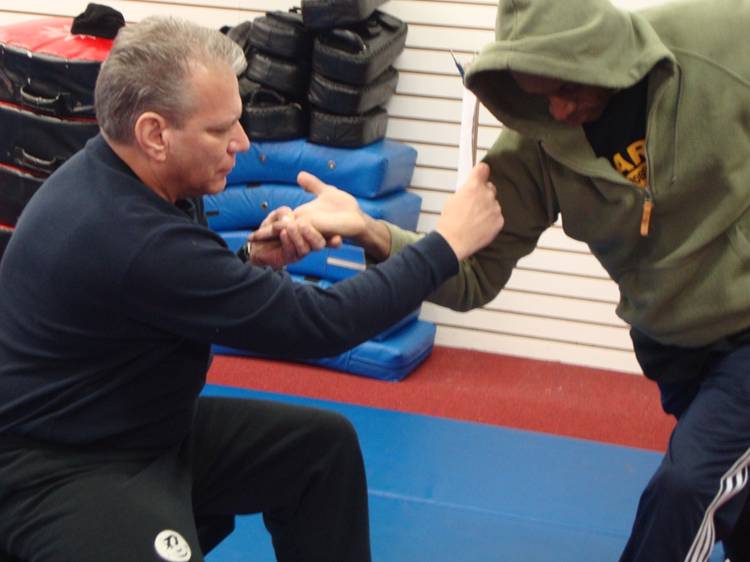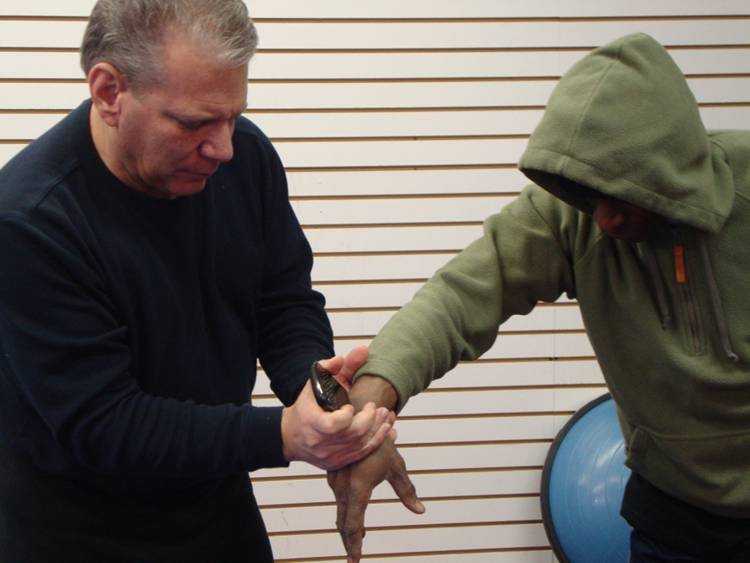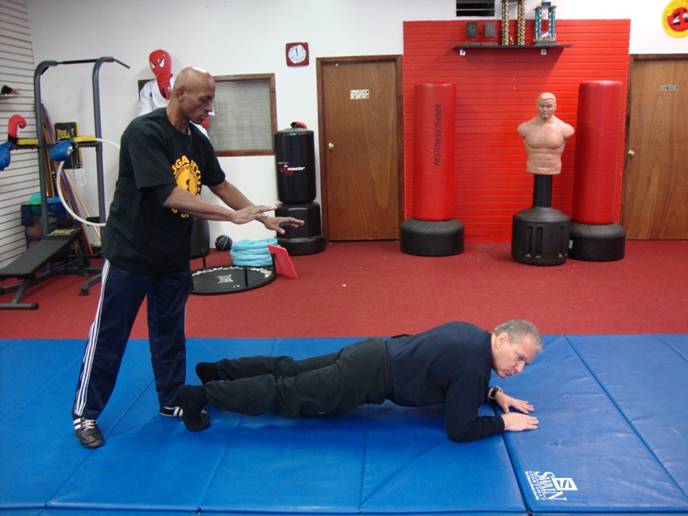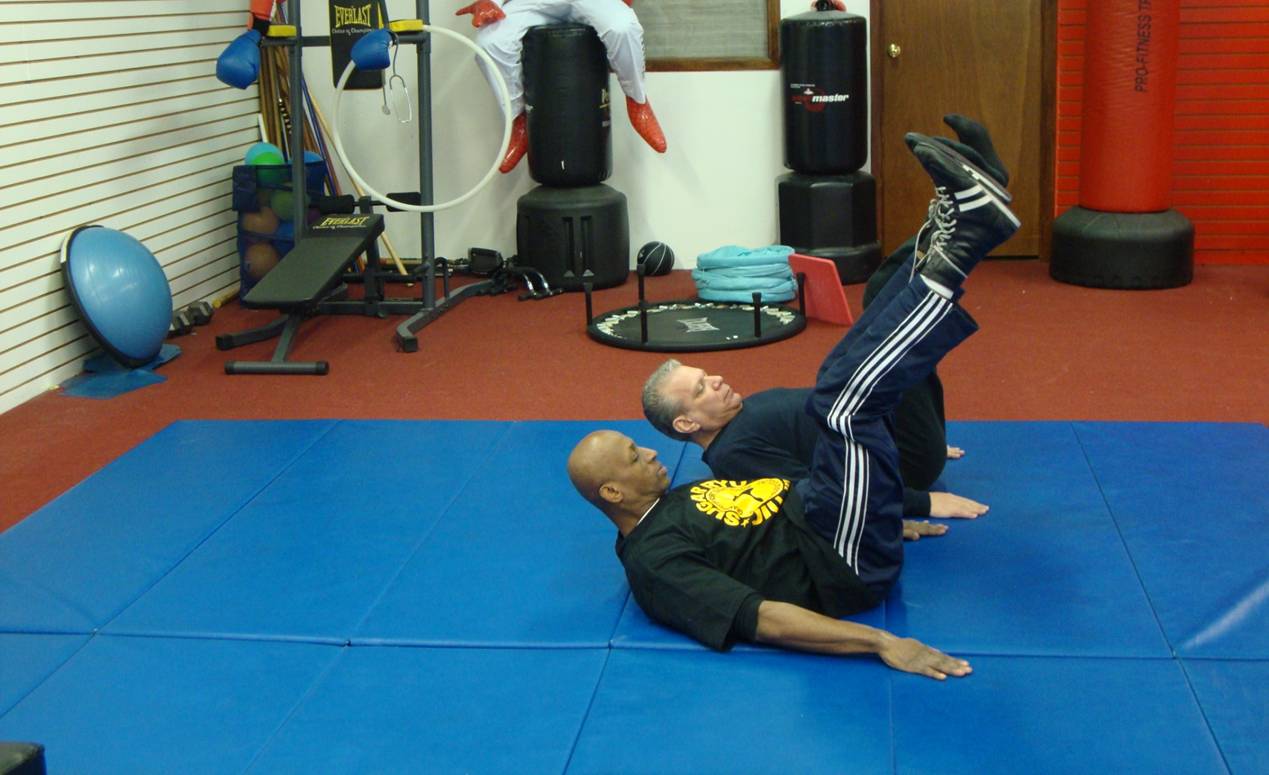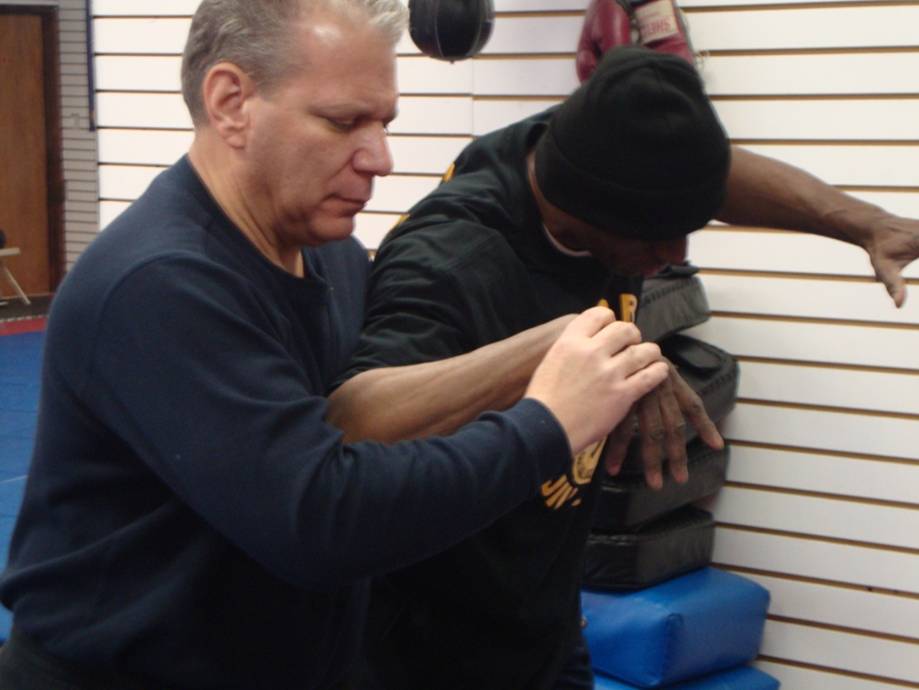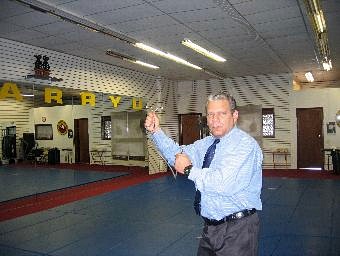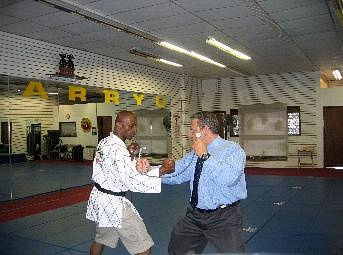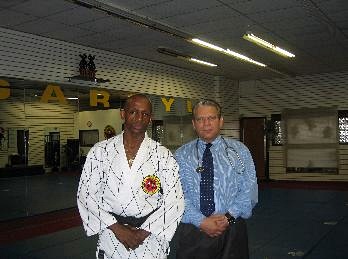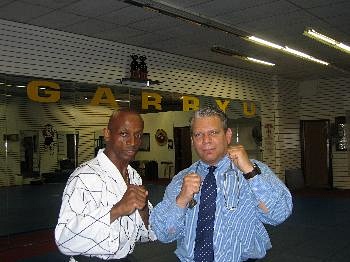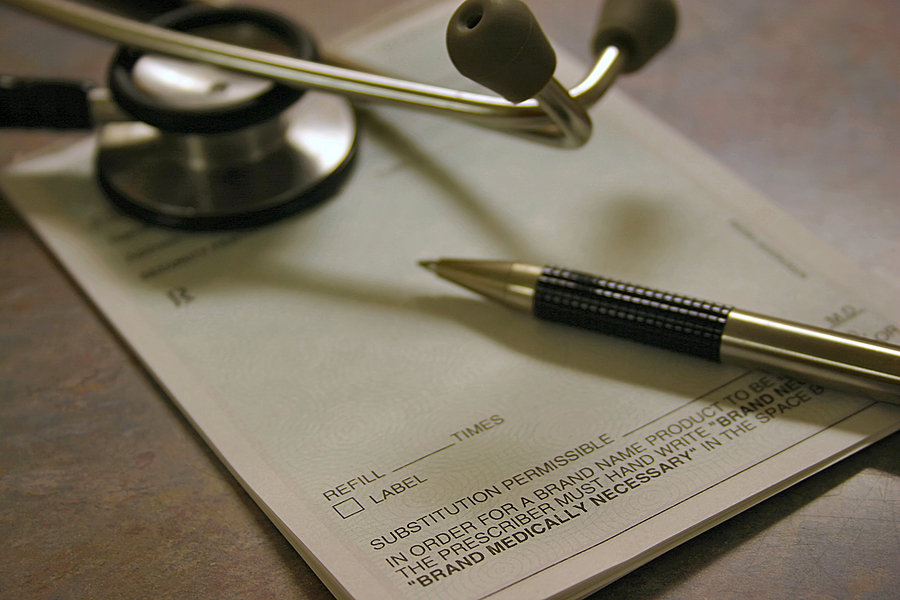Dr. Gerard has developed a ‘Unique” martial arts system designed explicitly for health care and Business professionals, including doctors, nurses, students, allied health care workers, etc. These techniques work for anyone in the workplace setting.
Dr. Gerard has studied martial arts techniques for the past 30 years, which include a wide variety of styles including: Goju-Ryu, Sugar-Ryu JiuJitsu and “Circle of One” Ninjitsu.
Dr. Gerard and Professor Robert Crosson (10th degree Master, Sugar Ryu JiuJitsu) have joined forces and developed a martial arts system specifically targeted and designed with the Health Care and Business Professional in mind.
The system utilizes what a health care worker would normally carry in their white jackets, shirts, medical bags, wallets, beeper, cell phone, etc. This is a 2 level system: 1. Defensive techniques only for the health care setting, and 2. Defensive techniques for “out of the health care setting” (i.e. leaving work at midnight going to get your car in a lonely garage”). These similar techniques work for Business Professionals in the workplace, with objects normally carried in their dialy working attire.
In addition, Psychology of dealing with agitated and disturbed individuals, “Streetology” (everyday street related scenarios), situation recognition and conflict avoidance techniques are stressed. Physical fitness techniques and methods of stress reduction are also emphasized. The concept of “Streetology” is how to be aware of your surroundings at all times, always being alert to potential dangers, and involves all the concepts of how to never become a victim, learning how to be safe. All these concepts are intensely taught within this course.
The instruction on techniques of how to fall are also very useful during daily activities such as slipping or falling on ice or other wet surfaces, helping to prevent significant injuries.
The course will also increase worker and employer awareness of the risk factors for violence in health care and business settings and to provide strategies for reducing exposure to these factors. Although anyone working in a hospital may become a victim of violence, nurses and aides who have the most direct contact with patients are at higher risk. Other hospital personnel at increased risk of violence include emergency response personnel, hospital safety officers, and all health care providers. The course will also teach self defense in the office setting, self defense in your car and home, and self defense in other public areas.
To prevent violence in health care settings, employers should develop a safety and health program that includes management commitment, employee participation, hazard identification, safety and health training, and hazard prevention, control, and reporting. Employers should evaluate this program periodically. Although risk factors for violence are specific for each health care setting, and its work scenarios, employers can follow general prevention strategies. (Occupational Hazards in Hospital DHHS, the National Institute For Occupational Safety And Health (NIOSH) Publication No. 2002-101, April 2002).
If you are interested in learning this unique set of techniques, or would like to have this seminar and series of lectures taught at your institution (anywhere in or out of the United States), and for references on this article, please contact Dr. Gerard at the following email address:docnucs@yahoo.com
[widgetkit id=55]
